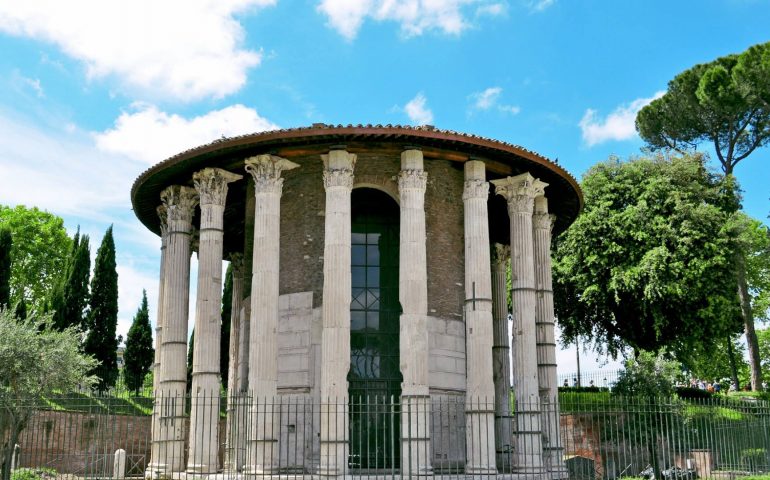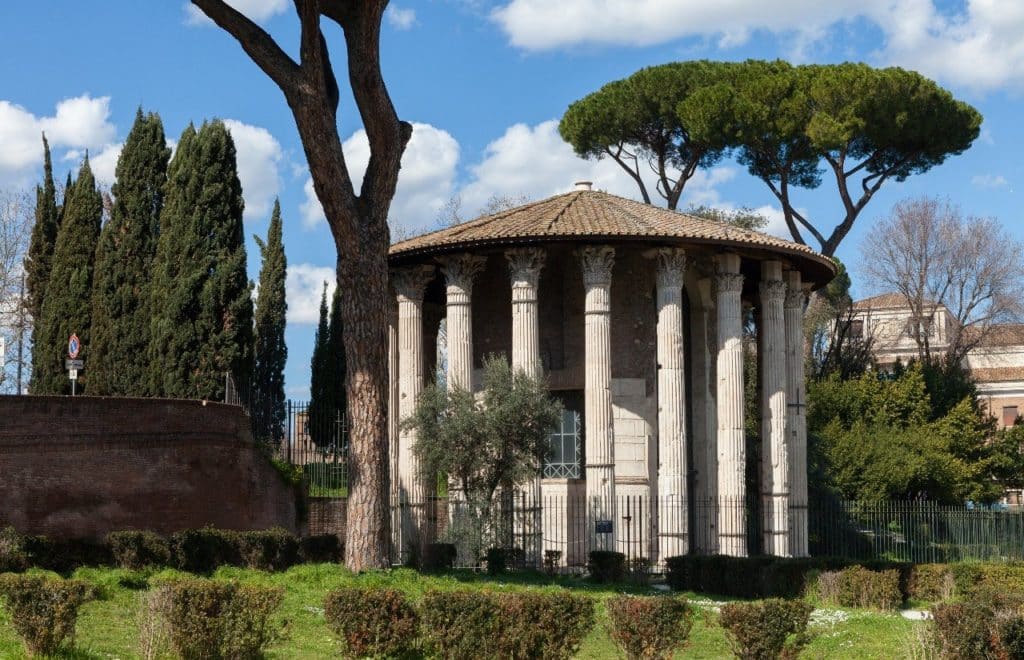The oldest building standing in the Eternal City
The oldest building standing in Rome is the temple of Hercules Victor and dates back to the second century BC and today represents the oldest building in Rome still standing. This temple is sometimes still referred to as the Temple of Vesta and the error is due to its circular shape which makes it similar to the real Temple of Vesta located in the Roman Forum. All this due to an incorrect attribution, born during the Renaissance. A curious peculiarity that makes it even more mysterious and fascinating.

The temple is circular in shape with twenty Corinthian columns surrounding the cylindrical cell and rests on a ring foundation on a tuff block platform. A favissa opens in the floor of the cell, a place where the ancient Romans deposited votive objects, consisting of a deep well, where the burnt remains of sacrifices were collected.
ROME TOUR AVAILABLE HERE
This temple confirms the economic power that the Roman merchants had. In fact, it is said that a rich merchant commissioned this work which was dedicated to Hercules protector of the oil producers, HERCULES OLIVARIUS, of the corporation to which the merchant belonged.
Over time the temple was then converted into a church which was dedicated to Santo Stefano and subsequently changed its name to that of Santa Maria del Sole.

The building was dedicated to Ercole Vincitore, protector of the Italic traders who carried out their activities in the nearby Foro Boario. The building underwent a restoration under Tiberius, probably after the flood of 15 AD.
As reported by the Turismo Roma website, in the 12th century (1140) it was transformed into the church of Santo Stefano delle Carrozze, and from the middle of the 16th century, before its abandonment, it was dedicated to S. Maria del Sole due to an image miraculous of the Madonna found in the Tiber. Inside there is still a fresco from the end of the fifteenth century depicting the Madonna with Child and Saints.
The entire building and the fresco have been recently restored.
The Temple of Ercole Vincitore or Ercole Invitto or Ercole Oleario, is located in Piazza della Bocca della Verità in Rome, not far from the Temple of Portunus within the forum Boarium.
Dating back to 120 BC approximately, it is the oldest preserved marble building in Rome (the most ancient was the temple of Jupiter Stator in the portico of Metello, from 146 BC, now lost). The structure of the temple imitated that of the lost Temple of Hercules Invitto, built by Scipio Emiliano in 142 BC. near the Altar Massima and destroyed in the 15th century (some drawings and plans by Baldassarre Peruzzi and others remain).
The whole structure betrays a clear derivation from Greek models (with the steps instead of the podium and the marble structure), both in the architecture and in the decorations, inspired by models of the 4th century BC, such as the tholoi of the great Greek sanctuaries, with the however, a filter of late Hellenism. It is a typical work of Neo-Attic artists who in the 2nd century BC. they operated in Rome (in works such as the Altar of Domizio Enobarbus or the Capitoline Acrolith of Juno Regina).
The temple is monoptero, circular in shape, and is built in marble. Its plant has a diameter of 14.8 meters. The original marble used for the work is Greek, Pentelic.
It stands on a ring foundation of cappellaccio blocks in turn on a platform made of tuff blocks of Grotta Oscura, which incorporate the outlet of the Cloaca Maxima. The base has a crepidoma (stepped base), therefore without the podium of Italic origin.
GET A QUOTE FOR YOUR ROME TOUR

